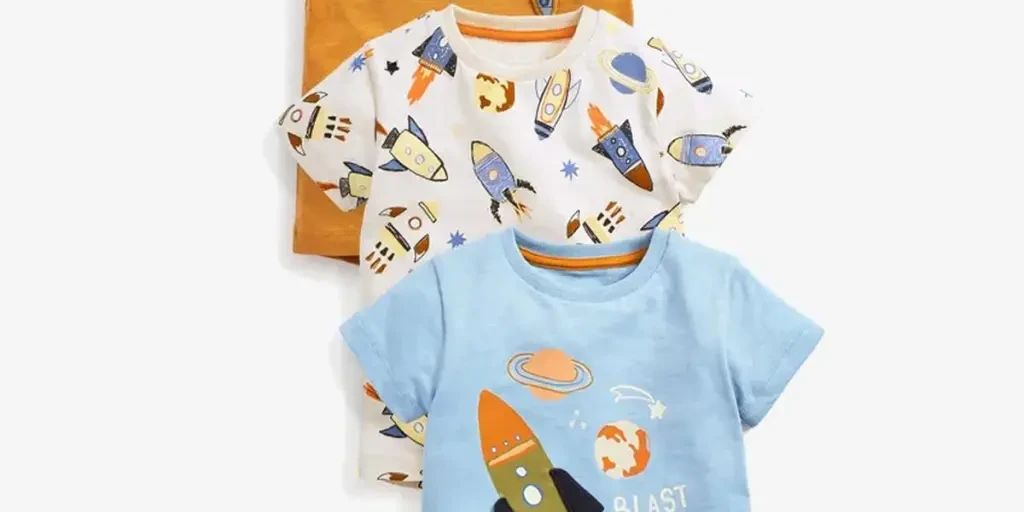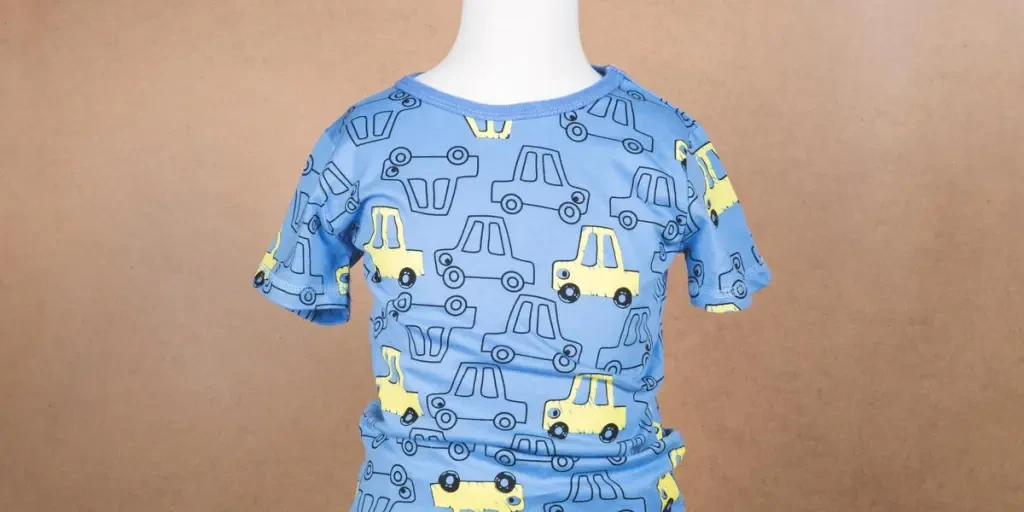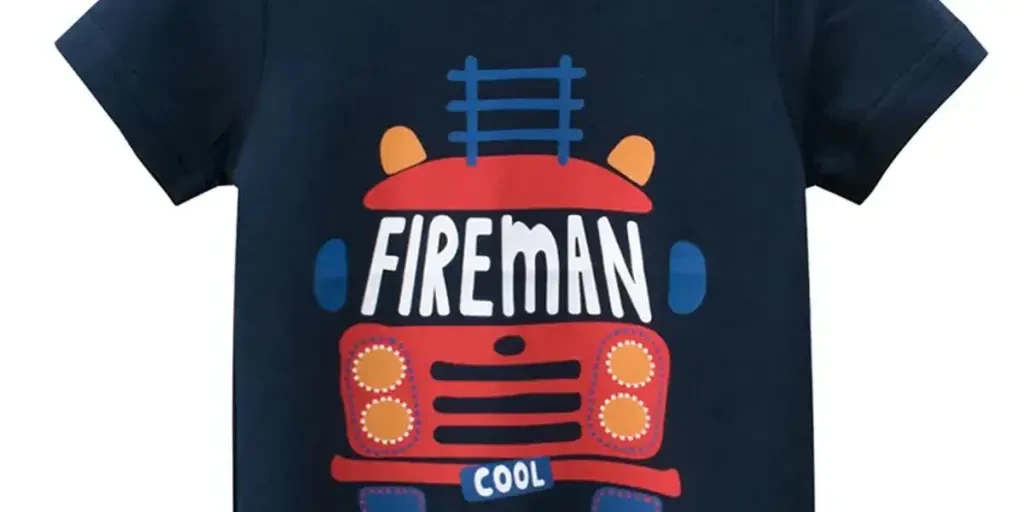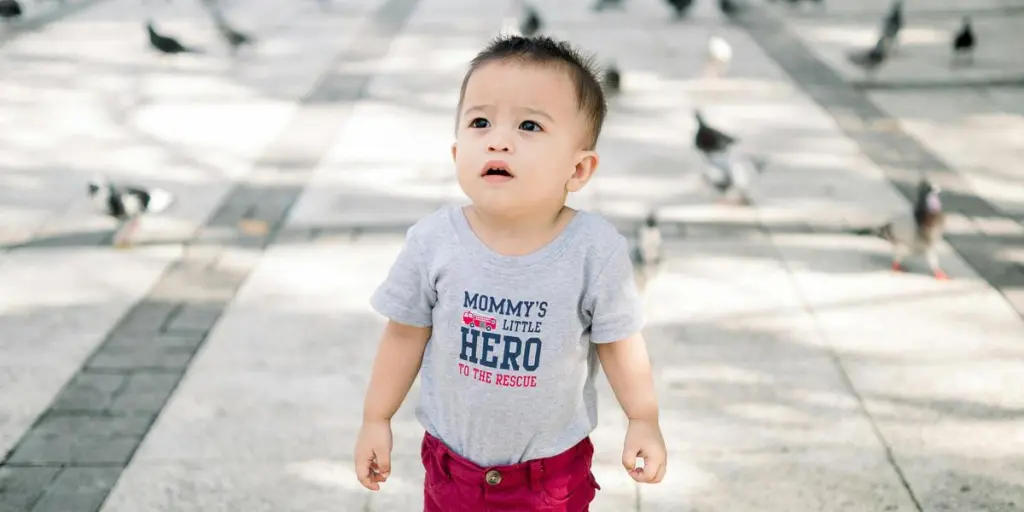Graphic baby tees are more than just a fashion statement; they are a cultural phenomenon. These tiny, stylish garments are making waves in the apparel industry, captivating parents and fashion-forward individuals. This article delves into the rising popularity of graphic baby tees, exploring market trends, design innovations, and the factors driving their success.
Table of Contents:
Market Overview: The Rising Popularity of Graphic Baby Tees
Design Trends: What Makes Graphic Baby Tees Stand Out
Materials and Fabrics: Ensuring Comfort and Durability
Functionality and Features: Practicality Meets Style
Seasonality: Adapting Graphic Baby Tees for Every Season
Conclusion
Market Overview: The Rising Popularity of Graphic Baby Tees

The market for graphic baby tees is experiencing a significant surge, driven by a combination of factors including increasing birth rates, rising disposable incomes, and the growing influence of social media on fashion trends. According to a report by Research and Markets, the global baby clothing market is expected to grow from USD 73.63 billion in 2023 to USD 109.91 billion by 2030, at a CAGR of 5.88%. This growth is indicative of the broader trend towards personalized and fashionable baby clothing, with graphic baby tees being a standout segment.
One of the key drivers of this market is the increasing demand for customized and unique clothing options for babies. Parents today are more fashion-conscious and are looking for ways to express their personal style through their children’s clothing. Graphic baby tees, with their wide range of designs and prints, offer the perfect canvas for this expression. The custom t-shirt printing market, which includes graphic baby tees, is projected to grow by USD 2.01 billion during 2023-2028, accelerating at a CAGR of 7.44% during the forecast period, as reported by Research and Markets.
The rise of eCommerce has also played a crucial role in the popularity of graphic baby tees. Online platforms provide a convenient way for parents to browse and purchase a wide variety of designs from the comfort of their homes. This has led to an increase in the number of small businesses and independent designers entering the market, offering unique and innovative designs that cater to niche audiences.
Regional insights reveal that the Americas, particularly the United States and Canada, represent a significant portion of the baby clothing market. High parental awareness regarding baby health, fashion, and comfort, alongside a strong preference for organic and sustainable products, drives consumer demand in this region. In South America, economic improvement and the rising urban middle class contribute significantly to market growth.
Europe’s baby clothing market is marked by a preference for high-quality, sustainable clothing options. The presence of numerous established fashion brands venturing into baby clothing lines has driven innovation and growth. The baby clothing market in the Middle East and Africa (MEA) is evolving, with a noticeable shift towards luxury and branded apparel, driven by increasing purchasing power and growing awareness of international fashion trends.
In the Asia-Pacific region, rapid growth in the baby clothing market is observed, with China and India leading due to their massive population base and increasing disposable incomes. Japan, known for its attention to detail and quality, leans towards innovative, functional, and eco-friendly baby products.
The market dynamics represent an ever-changing landscape of the baby clothing market by providing actionable insights into factors, including supply and demand levels. Accounting for these factors helps design strategies, make investments, and formulate developments to capitalize on future opportunities. In addition, these factors assist in avoiding potential pitfalls related to political, geographical, technical, social, and economic conditions, highlighting consumer behaviors and influencing manufacturing costs and purchasing decisions.
Design Trends: What Makes Graphic Baby Tees Stand Out

Unique Patterns and Prints: Captivating Designs for Little Ones
Graphic baby tees are a delightful canvas for creativity, offering a wide array of unique patterns and prints that captivate both parents and children. The designs often feature whimsical elements such as cute characters, playful food motifs, and scenic prints. According to a professional report, the trend of incorporating #FoodInFashion remains strong, with Gen Z foodies showcasing the latest trends through wearable graphics and slogans. This trend is particularly appealing for baby tees, as it brings humor and joy to the designs, making them more engaging for little ones.
Additionally, the use of hand-drawn designs that evoke a day-to-night vacation vibe is gaining popularity. These designs often include elements like palm trees, pineapples, and other tropical motifs, which align with the #Scenic aesthetic. The incorporation of rustic embroidered elements further enhances the handcrafted feel of these tees, making them stand out in the market.
Color Palettes: From Pastels to Vibrant Hues
The color palettes for graphic baby tees are diverse, ranging from soft pastels to vibrant hues. Pastel colors such as soft greens, sage green, and washed-out versions of bio-mint are particularly popular for their gender-inclusive appeal and transseasonal versatility. These colors are often used in sustainable collections and neutral-heavy ranges, providing a subtle pop of color that is both soothing and visually appealing.
On the other hand, vibrant hues like retro blue, orange, and green are also making a comeback. These colors are often grounded on off-whites and ecru base colors, creating a vintage washed-out look that adds a nostalgic touch to the tees. The use of deep, twin-needle finished contrast neck bindings further enhances the retro feel, making these tees a favorite among parents who appreciate a touch of nostalgia in their children’s clothing.
Cultural Influences: How Heritage Shapes Baby Tee Designs
Cultural influences play a significant role in shaping the designs of graphic baby tees. Heritage-inspired designs often incorporate elements from various cultures, adding a unique and meaningful touch to the tees. For instance, the use of gothic elements and Japanese folklore motifs, as seen in the brand Edwin, brings a rich cultural narrative to the designs. These motifs often include skulls, skeletons, and other macabre elements, which are updated to appeal to modern tastes.
Moreover, the influence of #Cottagecore is evident in the baby/toddler market, with brands leveraging this trend to create safe and commercially appealing designs. The use of trellis ditsy, sunflower motifs, and regimented repeat patterns adds a touch of vintage charm to the tees, making them timeless and versatile.
Materials and Fabrics: Ensuring Comfort and Durability

Soft and Breathable Fabrics: Prioritizing Baby’s Comfort
The comfort of the baby is paramount when it comes to choosing materials for graphic baby tees. Soft and breathable fabrics such as cotton, linen, and hemp are commonly used to ensure maximum comfort. According to a professional report, a cotton/linen blend with a dry, textured handfeel feeds into the rustic aesthetic, making these tees not only comfortable but also visually appealing.
Jersey linings are often used to enhance comfort, providing a soft layer against the baby’s skin. These linings can also match the scenic prints used for the graphic tees, creating a cohesive and comfortable design. The use of natural buttons sourced from coconut husk and nickel-free snap-stud fastenings further ensures that the tees are safe and easy to wear.
Sustainable Materials: Eco-Friendly Choices for Conscious Buyers
Sustainability is a growing concern among consumers, and the apparel industry is responding by offering eco-friendly choices for conscious buyers. The use of sustainable materials such as GOTS-certified or GRS cotton jersey is becoming increasingly popular. These materials not only reduce the environmental impact but also provide a high level of comfort and durability.
Designing for longevity is another key aspect of sustainability. Brands are focusing on creating tees that can be resold or recycled, ensuring that they have a longer lifespan. The use of mono-material techniques to increase recyclability and the incorporation of surplus fabric and offcuts to create appliqué are some of the strategies being employed to minimize waste and promote circularity.
Functionality and Features: Practicality Meets Style

Easy-to-Wear Cuts: Simplifying Dressing for Parents
Practicality is a crucial factor in the design of graphic baby tees. Easy-to-wear cuts that simplify dressing for parents are highly valued. Boxy tees with rolled sleeve details and contrast retro-style neck trims are popular choices, as they are easy to put on and take off. The use of nickel-free snap-stud fastenings for easy access to nappies further enhances the practicality of these tees.
Versatile Sizes: Catering to Growing Babies
Versatility in sizing is another important feature of graphic baby tees. Brands are offering tees in a range of sizes to cater to growing babies, ensuring that the tees can be worn for a longer period. Multi-packs with bold print and plain assortments are also being pushed to provide a retro statement look that can be mixed and matched with other items in the baby’s wardrobe.
Seasonality: Adapting Graphic Baby Tees for Every Season

Summer Styles: Lightweight and Cool
For the summer season, lightweight and cool materials are essential. Cotton and linen blends are ideal for keeping babies comfortable in warm weather. The use of breathable fabrics and airy designs ensures that the tees are suitable for hot summer days. Scenic prints and tropical motifs add a fun and playful touch to the summer styles, making them perfect for outdoor activities.
Winter Warmth: Cozy and Layerable Options
In the winter season, cozy and layerable options are key. Thicker fabrics such as textured retro towelling variations and heather quality jerseys provide warmth and comfort. These tees can be easily layered with other clothing items to keep babies warm during the colder months. The use of deep, twin-needle finished contrast neck bindings and vintage washed-out colors adds a nostalgic touch to the winter styles, making them both stylish and functional.
Conclusion
Graphic baby tees are a delightful blend of creativity, comfort, and practicality. With unique patterns and prints, diverse color palettes, and cultural influences, these tees stand out in the market. The use of soft and breathable fabrics, sustainable materials, and easy-to-wear cuts ensures that they are comfortable and durable. Versatile sizes and seasonally adapted designs make them suitable for every occasion. As the apparel industry continues to innovate, the future of graphic baby tees looks bright, with a focus on sustainability, functionality, and timeless appeal.




